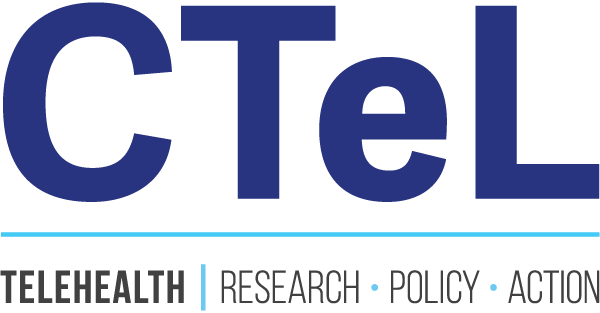The Digital Divide in Healthcare Reopens: One Year Without the Affordable Connectivity Program
The expiration of the Affordable Connectivity Program (ACP) in June 2024 has severed a critical lifeline for over 23 million American households, disproportionately impacting their ability to access essential telehealth services. One year later, the consequences are stark: a measurable decline in telehealth usage, particularly among the nation's most vulnerable populations, and a growing body of evidence revealing the profound negative impacts on the health and well-being of those who relied on this vital program.
The ACP, a bipartisan initiative, provided a modest monthly subsidy that made broadband internet and connected devices affordable for low-income families, seniors, veterans, and residents of tribal lands. For many, this was not a luxury but a necessity, the digital equivalent of a ramp for accessing modern healthcare. With the program's demise, that ramp has been abruptly removed, leaving millions stranded on the wrong side of the digital divide.
The Unplugging of Telehealth: A Look at the Data
The connection between the ACP's expiration and a decline in telehealth is not merely anecdotal; it is borne out by compelling research and data. A comprehensive study by The Brattle Group (2025) projects a staggering loss of 12 million telehealth visits annually in the absence of the ACP. This is not just a matter of convenience; for many, telehealth represents a crucial link to primary care, mental health services, chronic disease management, and specialist consultations that may otherwise be inaccessible due to geography, mobility issues, or cost.
A survey conducted by the National Lifeline Association and cited by the Benton Institute for Broadband & Society (2025) paints an even more immediate and grim picture. The survey found that 36% of former ACP participants have been forced to discontinue telehealth services since the program ended. This alarming statistic translates to millions of individuals who are now likely to delay or forgo necessary medical care, leading to poorer health outcomes and increased costs down the line.
The financial implications are also significant. The Brattle Group's analysis (2025) revealed that the healthcare savings generated by telehealth services for ACP recipients more than offset the program's cost. The study estimated that the program could have saved the healthcare system up to $29.5 billion annually, a substantial return on the $7.3 billion annual investment. The termination of the ACP is not just a social issue; it is a fiscally short-sighted decision with long-term economic consequences.
Voices from the Divide: The Human Cost of Disconnection
Behind these statistics are the personal stories of individuals and families who are now facing impossible choices. Impact statements gathered from across the country reveal a consistent and heartbreaking narrative:
"I have to choose between my internet and my medicine, and I have an 11-year-old who needs the internet to complete homework. I desperately need the ACP program." - A former ACP user, as told to CNET (Supan, 2025).
Deanna T. from Missouri shared that the loss of her internet service, which she could no longer afford without the ACP, created a "medical emergency for her family" (National Digital Inclusion Alliance, 2024).
For seniors, who are increasingly reliant on telehealth for routine check-ups and managing chronic conditions, the loss of the ACP has been particularly devastating. AARP (2024) has highlighted the stories of older adults who now face renewed isolation and difficulty in accessing care.
These are not isolated incidents but rather a reflection of a systemic problem. The expiration of the ACP has forced a regression, pushing many back into a world where access to healthcare is dictated by their ability to afford a broadband connection.
The Disproportionate Impact on Vulnerable Communities
The end of the ACP has not affected all communities equally. The program was a lifeline for those who have historically faced the greatest barriers to healthcare access:
Low-income households: The very population the ACP was designed to serve is now facing the stark choice between internet access and other essential needs like food and rent.
Seniors: Many older adults on fixed incomes relied on the ACP to stay connected with their doctors and families.
Individuals with disabilities: For whom travel to in-person appointments can be a significant challenge, telehealth was a game-changer.
Residents of rural and tribal lands: In areas with limited healthcare infrastructure, the ACP made remote consultations a viable option.
By dismantling this crucial support system, we are exacerbating existing health disparities and further marginalizing already vulnerable populations.
The Path Forward: A Call to Action
The evidence is clear: the expiration of the Affordable Connectivity Program has had a detrimental impact on telehealth access and the ability of millions of Americans to obtain flexible and essential health services. This is a policy failure with real-world consequences, a step backward in our nation's journey toward digital equity and healthcare for all.
Restoring funding for the ACP is not just a matter of technological access; it is a critical investment in the health and well-being of our communities. Policymakers must recognize the immense value the program provided and act swiftly to reinstate this vital lifeline. The cost of inaction, measured in missed diagnoses, unmanaged chronic conditions, and widening health disparities, is a price our nation cannot afford to pay.
References
AARP. (2024). Older Adults Worry About Internet Access as ACP Ends. Retrieved from https://www.aarp.org/home-family/personal-technology/info-2021/fcc-subsidy-helps-broadband-internet-access.html
Benton Institute for Broadband & Society. (2025). One Year Without the Affordable Connectivity Program. Retrieved from https://www.benton.org/headlines/one-year-without-affordable-connectivity-program
The Brattle Group. (2025). Paying for Itself: How the Affordable Connectivity Program Delivers More Than It Costs. Retrieved from https://www.brattle.com/wp-content/uploads/2025/02/Paying-for-Itself-How-the-Affordable-Connectivity-Program-Delivers-More-Than-It-Costs.pdf
National Digital Inclusion Alliance. (2024). The End of the Affordable Connectivity Program: How Communities Are Coping and What Comes Next. Retrieved from https://www.digitalinclusion.org/blog/2024/11/19/the-end-of-the-affordable-connectivity-program-how-communities-are-coping-and-what-comes-next/
Supan, J. (2025, May 27). The ACP 'Saved My Life': Real People Share the Real Cost of Losing Affordable Internet. CNET. Retrieved from https://www.cnet.com/home/internet/the-acp-saved-my-life-real-people-share-the-real-cost-of-losing-affordable-internet/

